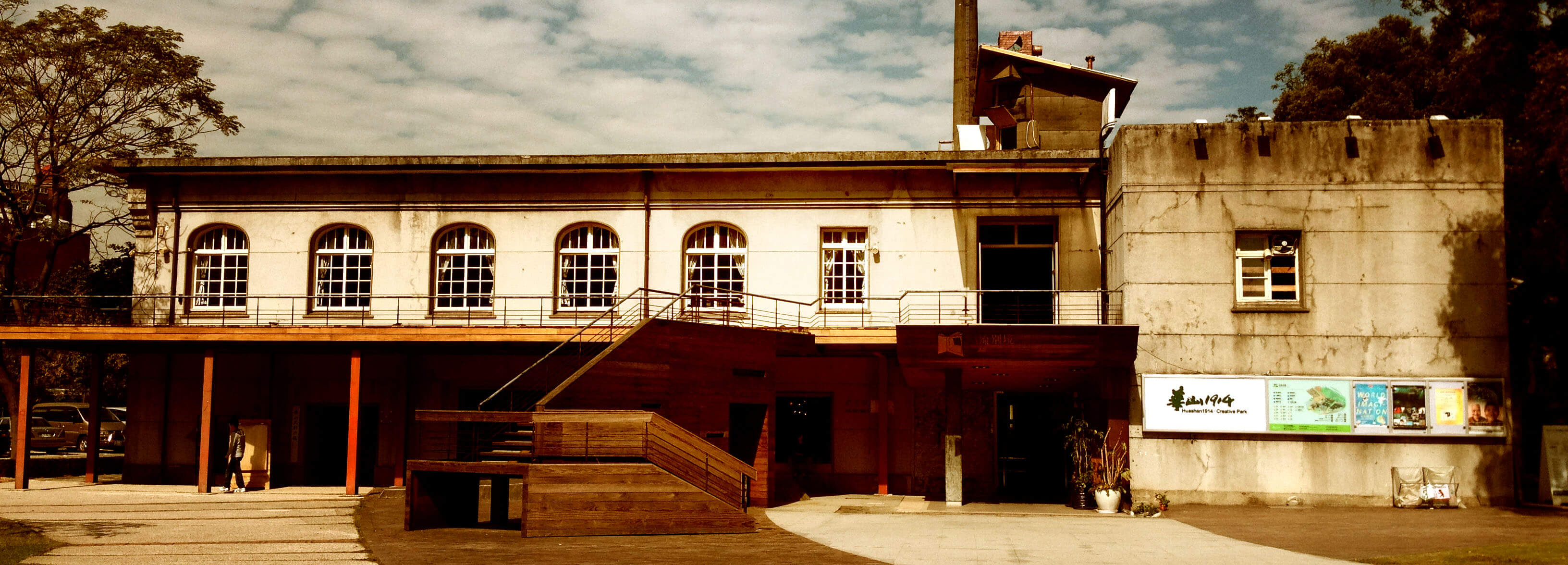
From first batch of sake in 1914 to vibrant cultural and creative scene in 2017, Huashan 1914 has thrived as a wine factory and been abandoned to falter into ruins; five periods, five intriguing stories…
1914~1987 Winemaking and Camphor Manufacturing
1914
Private winery “Houjou Wine Company” launched “Moth Orchid Sake.”
1917
“Japan Camphor Company, Taihoku Branch” produced refined camphor at the site now known as the Huashan Brick Land.
1922
Japanese Colonial government monopolized alcohol, wineries in Taiwan were either taken over by the government or shut down.
1929
Monopoly Bureau, Taiwan Governor-General’s Office, took over Houjou Wine Company and renamed it “Monopoly Bureau Taipei Wine Factory.”
1946
The ROC government took over Taipei Wine Factory and the camphor refinery, renaming it “Taiwan Province Monopoly Bureau Taipei Wine Factory.”
1961
The camphor refinery was shut down.
1987
The wine factory was relocated to Linkou.
1987~1999 Spatial Transformation
1987
The wine factory was relocated, and the space became disused.
1992
The Legislative Yuan changed the name of the old factory site to “Huashan District,” and designated it the future site of the new building of Legislative Yuan; however, the controversial plan was later abandoned.
1997
Artists advocated for Huashan District to be transformed into art center.
1998
The Monopoly Bureau commissioned Taiwan Provincial Government Ministry of Culture to manage and maintain Huashan District for three years, providing a venue for arts and cultural events and exhibitions.
1999
“Huashan Arts and Culture District” officially established.
1999~2003 Arts and Culture District
1999
“The Association of Culture Environment Reform, ROC.” took over management of Huashan, entering the era of “Huashan Arts and Culture District.”
2002
The Executive Yuan launched the “Challenge 2008: National Development Plan,” planning to invest NTD 5.7 billion over the next six years to reutilize disused spaces at old wine factories owned by the Monopoly Bureau and establish five “cultural and creative park” from northern to southern Taiwan, including Huashan.
2003
Huashan Arts and Culture District officially transformed into “cultural and creative park.”
2003~2007 Cultural and Creative Transformation
2004
L’Orangerie International Art Consultant Co., Ltd. managed Huashan for one year.
2005
The park was closed down. The walls were taken down, and the historical sites and architectures were repaired and renovated.
2006
The management right to M6 “Movie Laboratory” OT Project was obtained by “Taiwan Film and Culture Association” represented by Hou Hsiao-hsien.
2007 January
Council for Cultural Affairs divided Huashan into three areas and outsourced the management to private entities.
2007 May
Yuan-Liou Publishing, Ambassador Hotel, and the Observer Design Group formed the “Taiwan Cultural and Creative Industry Association” and was the best applicant of the ROT project. June, “Taiwan Cultural-Creative Development Co., Ltd.” was founded.
2007 November
Taiwan Cultural-Creative Development Co. and Council for Cultural Affairs officially signed agreement.
2007 December
Taiwan Cultural-Creative Development Co. moved in and began operation of “Huashan 1914 Creative Park.”
2007~2017 Shared by All
2007
“Huashan 1914 Creative Park” began operation.
2011
The Council for Cultural Affairs officially named the ROT project “Huashan Cultural and Creative Industries Park” , but the park is commonly known as “Huashan 1914 Creative Park” .
2012
Council for Cultural Affairs was upgraded to Ministry of Culture, establishing the Department of Cultural and Creative Development to be in charge of planning, review, guidance, audit, and reward for cultural and creative industries parks and industrial clusters.